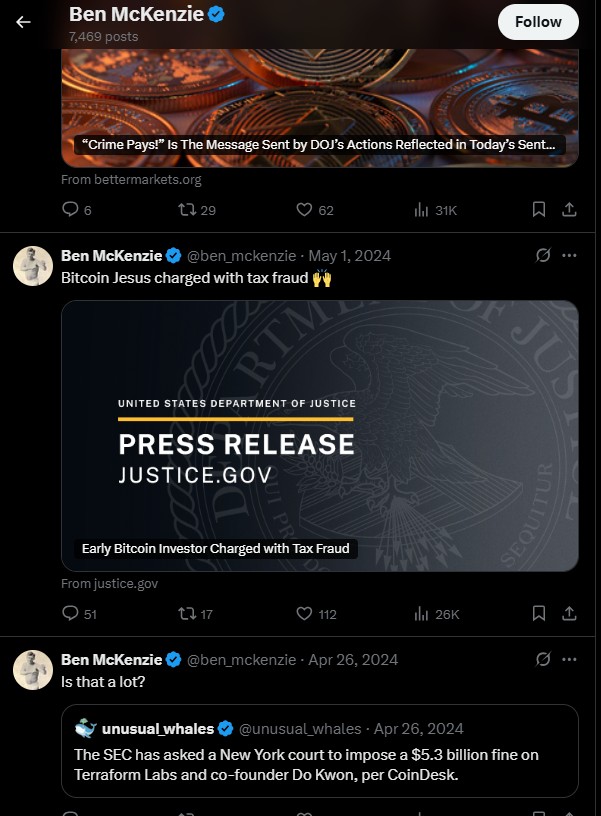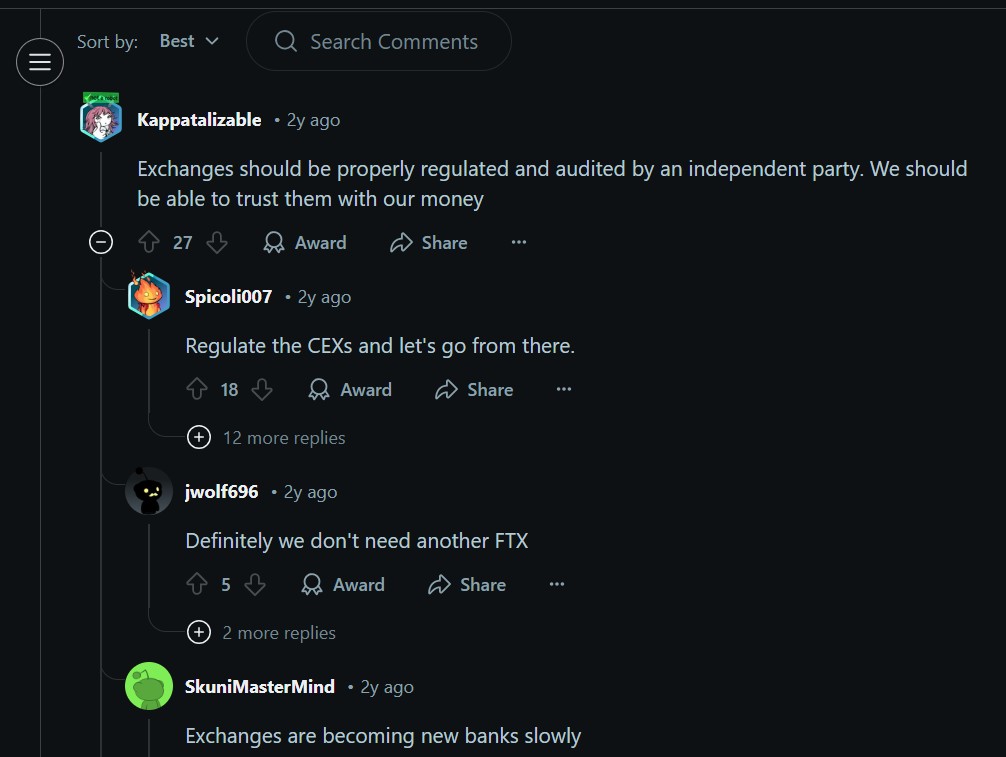Crypto Regulation Explained. What Investors Need To Know In 2025



Editorial Note: While we adhere to strict Editorial Integrity, this post may contain references to products from our partners. Here's an explanation for How We Make Money. None of the data and information on this webpage constitutes investment advice according to our Disclaimer.
Crypto regulation is not just about security. It is a battle over control. Global rules vary wildly, from Europe's MiCA framework to China's complete ban. For investors and builders, the challenge is not just legal clarity. It is keeping up with shifting policies driven by politics, not just technology.
Regulating crypto is not just about what is legal. It is a power struggle over who gets to define how money works in the future. Regulators are not only worried about scams or risky trading. What really shakes them is the idea of an economy that moves without banks or middlemen. A system run by code that dodges the usual control points. That is why crypto regulation feels messy. It is not just about writing new rules. It is about trying to control something they don’t fully get.
The global regulatory landscape
As cryptocurrencies gain mainstream attention, governments worldwide are grappling with how to regulate this fast-evolving space. The approaches range widely, from comprehensive legal frameworks to partial, evolving rules to outright bans. Understanding this mix is essential for investors, builders, and users navigating the crypto ecosystem.
Countries with comprehensive frameworks
| Country | Regulatory highlights |
|---|---|
| European Union (EU) | MiCA unifies rules across member states. Covers stablecoins, token issuers, and service providers. Licensed firms can operate EU-wide. |
| Singapore | Regulated by MAS. Licenses issued for digital token services. Balanced innovation and compliance. |
| Canada | Exchanges treated as MSBs under AML laws. Must register with FINTRAC. Securities rules apply case by case. |
| Brazil | Crypto legalized as payment. Central Bank overseas sector. Clearer rules for exchanges in development. |
Countries with partial or evolving regulations
| Country | Regulatory highlights |
|---|---|
| United States | Regulatory uncertainty due to overlapping authorities (SEC, CFTC, IRS). New laws proposed but delayed. |
| India | 30% capital gains tax and 1% TDS. Framework under development. Aims to balance innovation and stability. |
| South Africa | Crypto classified as a financial product. Licensing in progress, including stablecoin rules. |
| United Kingdom | Crypto covered under new financial promotion rules. Stronger oversight on advertising and consumer protection. |
Countries with outright bans
| Country | Reason & Status |
|---|---|
| China | Full ban on trading, mining, and exchanges. Cited capital flight and financial crime concerns. |
| Kuwait | 2023 ban on all crypto activity to protect the financial system and meet AML standards. |
| Algeria,Bangladesh,Nepal | Total bans on crypto holding and transactions due to financial security concerns. |
Key regulatory components
Crypto regulations tend to focus on three big areas. Countries usually make sure crypto platforms follow licensing rules, follow identity checks, and report income for taxes. These steps help make the system safer and more transparent for everyone using it.
Licensing and registration requirements
Licensing plays a critical role in the legal operation of crypto exchanges, wallets, and custodians. These businesses are often required to obtain formal approval from regulatory bodies to ensure they meet minimum standards for financial stability, user safety, and operational transparency.
Around the world, different regions have adopted regulatory frameworks to bring crypto services in line with traditional financial systems. In the European Union, providers must be licensed under the MiCA (Markets in Crypto-Assets) regulation, which introduces a unified approach to supervision. In Singapore, crypto platforms are regulated by the Monetary Authority of Singapore under the Payment Services Act, which focuses on financial soundness and anti-money laundering compliance. Canada classifies crypto exchanges as money service businesses, requiring them to register and adhere to strict government oversight.
These licensing requirements help protect users, support market integrity, and signal legitimacy in an evolving financial landscape.
Anti-money laundering and know your customer protocols
To keep both users and platforms secure, crypto companies are required to implement anti-money laundering (AML) and know your customer (KYC) procedures. These measures are designed to prevent criminal activity, such as money laundering and the use of cryptocurrency to finance illegal operations.
Compliance begins with basic identity verification. Most platforms request personal information, such as official identification and contact details, before allowing users to trade, deposit, or withdraw funds. In addition to verifying identities, companies monitor transactions and are obligated to report any activity that appears suspicious to relevant authorities.
On a global level, the Financial Action Task Force (FATF) promotes standardized practices across jurisdictions. One of its key recommendations is the “Travel Rule,” which requires crypto platforms to share sender and recipient information during transactions, mirroring the protocols used in traditional banking. These efforts aim to create a safer, more transparent crypto ecosystem worldwide.
Taxation policies and reporting obligations
Cryptocurrency earnings are taxable in most jurisdictions. Whether the income comes from trading, mining, staking, or earning interest, individuals are generally required to report their gains and pay the appropriate taxes. Tax authorities view these activities as sources of income or capital gains, depending on local regulations.
As governments adapt to the growth of digital assets, many are introducing dedicated reporting frameworks. In the United States, for example, the Internal Revenue Service is rolling out Form 1099-DA to streamline crypto tax reporting. Internationally, organizations like the OECD are working to improve information sharing between countries, aiming to close loopholes and prevent individuals from concealing crypto income across borders.
Despite these efforts, crypto taxation still presents challenges. Tracking every transaction, especially across decentralized platforms, can be complex. However, the development of better reporting tools, clearer regulatory guidance, and broader educational initiatives are making compliance more achievable for everyday users.
Impact of regulation on cryptocurrency markets


Regulations around cryptocurrencies can significantly influence how the market behaves. Clear and consistent rules can make investors feel more secure, attract big financial players, and encourage new ideas. On the other hand, unclear or strict regulations might cause market ups and downs and slow down technological progress.
Market volatility and investor confidence
When governments set clear rules for cryptocurrencies, it often leads to a more stable market. Investors are more likely to put their money into crypto when they understand the legal landscape, which can reduce sudden price swings. However, unexpected regulatory changes or vague policies can create uncertainty, leading to rapid price changes and making investors wary.
Institutional adoption and market maturity
Big financial institutions, like banks and investment firms, are more likely to get involved in crypto when there are clear guidelines to follow. Knowing the rules about things like how to store digital assets and report transactions makes it easier for these organizations to participate. Their involvement can lead to a more mature market with more money flowing in and greater acceptance of cryptocurrencies.
Innovation and technological development
Having clear rules can also encourage tech developers and entrepreneurs to create new crypto-related products and services. When they know what's allowed, they're more likely to invest time and resources into innovation. But if the rules are too strict or confusing, it might discourage people from trying new ideas, slowing down progress in the field.
Case studies of regulatory approaches
Governments around the world are handling cryptocurrencies in different ways. By looking at the regulatory strategies of the European Union, the United States, and China, we get a snapshot of how law and policy are shaping the future of digital assets.
European Union's Markets in Crypto-Assets Regulation
What happened
In 2023, the EU passed the Markets in Crypto-Assets Regulation (MiCA), creating the first detailed legal framework for crypto in a major economic zone.
MiCA applies to all 27 member states and sets out rules for stablecoins, utility tokens, crypto exchanges, and wallet providers.
It includes licensing requirements, disclosure norms, consumer protections, and rules to prevent market abuse like insider trading.
Why it matters
MiCA gives crypto firms a clear path to operate legally across the entire EU with a single license.
It boosts investor trust and reduces legal risk, especially for startups and large financial institutions entering the space.
MiCA also serves as a blueprint for other countries exploring comprehensive crypto regulation.
Implications
The EU has positioned itself as a global regulatory leader.
Companies are more likely to base operations in Europe due to predictable rules.
It sets the stage for smoother integration between traditional finance and digital assets.
United States' dual-agency oversight
What happened
In the U.S., cryptocurrency oversight is split between two federal agencies: the Securities and Exchange Commission (SEC) and the Commodity Futures Trading Commission (CFTC).
The SEC treats many tokens as securities and requires registration. The CFTC considers others as commodities and handles futures markets.
There is no single, unified crypto law. Court cases like SEC vs Ripple and proposed bills like the Digital Commodities Consumer Protection Act have not yet resolved the jurisdiction overlap.
Why it matters
The lack of a clear framework creates confusion and legal risk for crypto companies operating in the U.S.
Startups may delay launching or move offshore to avoid regulatory uncertainty.
Despite the chaos, the U.S. remains a hub for blockchain innovation and VC funding.
Implications
A clearer law could unlock more institutional investment and broader adoption.
Until then, enforcement will likely continue through lawsuits and agency guidance, which may create an uneven playing field.
China's comprehensive ban and its implications
What happened
In 2021, China imposed a complete ban on all crypto activities, including trading, mining, and foreign exchanges.
The crackdown followed earlier bans on ICOs (2017) and exchange activity (2019).
Reasons included financial stability, environmental concerns from mining, and desire to control capital outflows.
Why it matters
China’s ban disrupted global crypto mining, forcing miners to relocate to the U.S., Kazakhstan, and Russia.
The move aligned with China’s push for a centralized digital yuan (e-CNY), a government-issued digital currency.
Local crypto innovation shrank, but underground trading persists via VPNs and foreign platforms.
Implications
China’s stance shows how quickly regulation can reshape global crypto dynamics.
Its strict approach contrasts with the EU’s and U.S.’s more open, albeit messy, frameworks.
Other authoritarian regimes may adopt a similar strategy to maintain monetary control.
| Kraken | Crypto.com | CoinMetro | Coinbase | Bitunix | |
|---|---|---|---|---|---|
|
Regulation |
Yes | Yes | Yes | Yes | Yes |
|
U.S |
Yes | No | Yes | Yes | Yes |
|
FCA (U.K) |
Yes | Yes | No | No | No |
|
AUSTRAC (Australia) |
Yes | No | Yes | No | No |
|
DFSA (UAE) |
No | No | No | No | No |
|
AMF (France) |
Yes | No | No | No | No |
|
British Virgin Islands |
No | No | No | No | No |
|
MFSA (Malta) |
No | No | No | No | No |
|
Spain |
Yes | No | No | No | No |
|
Germany |
Yes | No | No | No | No |
|
Singapore |
No | No | No | No | No |
|
Open an account |
Open an account Your capital is at risk. |
Open an account Your capital is at risk. |
Open an account Your capital is at risk. |
Open an account Your capital is at risk. |
Open an account Your capital is at risk.
|
Why trying to regulate crypto like stocks is a trap
What most people new to crypto assume is that it will be treated just like stocks someday. But crypto is not just another kind of investment. A single token can be used as currency, membership access, or a way to vote, breaking the old models completely. There is no one rule that fits all of it. If you are trading or building in crypto, forget labels and start looking at what the token actually does. That is what matters to regulators now. If you ignore that, you might get hit by a rule you never saw coming.
Another trap beginners fall into is thinking crypto law is shaped by tech. It is not. Laws follow the headlines. Who is in charge matters more than how smart the project is. Something that works in Europe might get blocked completely in the U.S. just because the politics shifted. If you really want to understand crypto regulation, do not just read technical papers. Keep an eye on what governments are doing. In this space, the danger is not always in the tech. Sometimes it is in the courtroom.
Conclusion
Crypto rules are not stopping anytime soon — and they are still changing fast. It is hard to pin them down because they are shaped more by power struggles and headlines than the tech itself. If you are in crypto, know this. The rules are not written for what crypto actually does. They are written based on what regulators are scared it will change. That is where people get lost. You do not need to break a rule to get caught off guard. Sometimes the rule shifts while no one is watching.
FAQs
What are the main objectives of cryptocurrency regulation?
The main goals are to prevent money laundering, protect investors, ensure market integrity, and reduce systemic risks. Regulations also aim to bring transparency and legal clarity to the growing digital asset space.
How do regulations affect cryptocurrency prices?
Regulatory news can trigger sharp price movements. Clear and favorable rules often boost investor confidence and prices, while bans, crackdowns, or tax uncertainties tend to cause market sell-offs.
What is the future of global cryptocurrency regulation?
The future points toward coordinated frameworks with clearer rules on stablecoins, exchanges, and DeFi. While approaches may differ by country, the trend is moving toward balance between innovation and risk control.
How can investors stay compliant with varying regulations?
Investors should monitor local laws, use regulated exchanges, maintain accurate transaction records, and consult legal or tax professionals. Staying informed is key to avoiding penalties and ensuring smooth participation.
Related Articles
Team that worked on the article
Anton Kharitonov is an active trader and analyst. He employs both short- and long-term trading strategies, primarily based on fundamental factors, supported by technical indicators and intermarket analysis. Anton trades major and minor currency pairs, while his primary focus is on oil futures and index CFDs.
As a financial expert and analyst at Traders Union since 2013, Anton performs thorough internal broker evaluations, referred to as “test drives.” He examines website and account interfaces, client support, software stability, deposit and withdrawal processing speed, legal documentation, and additional broker services such as VPS, affiliate programs, contests, bonuses, and training programs.
New knowledge is the key to expanding our horizons and unlocking new opportunities. Every step in learning, every new understanding empowers us become better, smarter, and stronger. Knowledge provides an advantage, enabling informed decisions, confident actions, and forward momentum. In a changing world, only those who embrace learning and adaptation can truly thrive.
Based on these evaluations, Anton prepares expert reports on the operation of Forex, stock, binary options, and cryptocurrency exchanges.
Chinmay Soni is a financial analyst with more than 5 years of experience in working with stocks, Forex, derivatives, and other assets. As a founder of a boutique research firm and an active researcher, he covers various industries and fields, providing insights backed by statistical data. He is also an educator in the field of finance and technology.
As an author for Traders Union, he contributes his deep analytical insights on various topics, taking into account various aspects.
Mirjan Hipolito is a journalist and news editor at Traders Union. She is an expert crypto writer with five years of experience in the financial markets. Her specialties are daily market news, price predictions, and Initial Coin Offerings (ICO).
Cryptocurrency is a type of digital or virtual currency that relies on cryptography for security. Unlike traditional currencies issued by governments (fiat currencies), cryptocurrencies operate on decentralized networks, typically based on blockchain technology.
CFD is a contract between an investor/trader and seller that demonstrates that the trader will need to pay the price difference between the current value of the asset and its value at the time of contract to the seller.
Volatility refers to the degree of variation or fluctuation in the price or value of a financial asset, such as stocks, bonds, or cryptocurrencies, over a period of time. Higher volatility indicates that an asset's price is experiencing more significant and rapid price swings, while lower volatility suggests relatively stable and gradual price movements.
The CFTC protects the public from fraud, manipulation, and abusive practices related to the sale of commodity and financial futures and options, and to fosters open, competitive, and financially sound futures and option markets.
Index in trading is the measure of the performance of a group of stocks, which can include the assets and securities in it.






























































































































